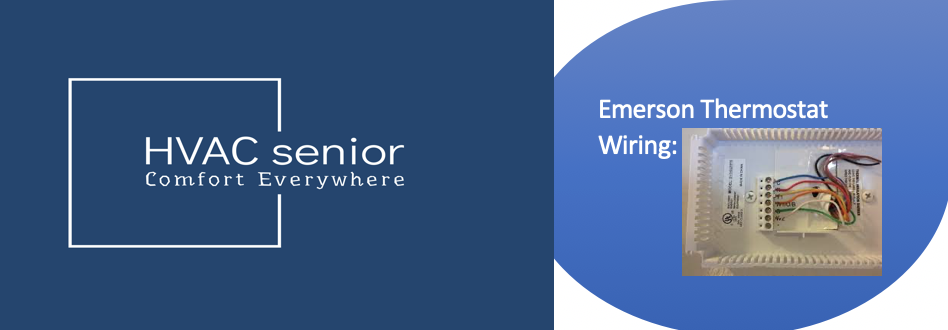Find out more about Air Conditioner Dry Mode.
Being trapped in a warm, muggy environment is among the worst possible situations. These kinds of circumstances can be downright oppressive.
But what if your house is clammy and cool? Heat is not necessary for an unappealing and excessively damp living environment.
Fortunately, your air conditioner will come in handy in situations like this. Although it is primarily designed to keep your house cool, your air conditioner can also be useful on chilly, rainy days.
Continue reading to learn more about the dry mode setting on your air conditioner, including when and why you should use it.
What is Air Conditioner Dry Mode.

Dehumidification mode, often known as dry mode, is a specialist option created to address a particular indoor comfort issue.
Dry mode has a unique goal that differs from conventional cooling mode, which typically focuses on cooling the air. It is all about humidity control and moisture reduction without the considerable cooling effect.
Here is a detailed explanation:
- Moisture Extraction: Dry mode’s main goal is to remove surplus moisture from the indoor air. It achieves this by changing how your air conditioner runs. It increases the evaporator coil’s temperature while slowing down the interior fan. The moisture in the warm, humid air condenses on the coil as it moves through the system, turning into water that is subsequently drained away. The amount of indoor humidity can be kept at a comfortable level with this approach.
- Limited Cooling: The objective of the dry mode is not to drastically lower the room’s temperature, in stark contrast to the conventional cooling mode. Its main function is dehumidification, while the natural evaporation of the collected moisture may provide a slight cooling impact.
The dry mode in air conditioners is a useful feature for controlling indoor humidity without using a lot of cooling.
You can increase your comfort, use less energy, and maintain a healthier indoor atmosphere in a variety of weather situations by being aware of and employing this feature efficiently.
It’s a setting that can be especially helpful in humid climates or at times of year when cooling is not the main priority.
You might need to explore why Air Conditioner Smells Musty.
How AC Dry Mode Works.
Standard Cooling Mode:
- Draws in warm indoor air: In standard cooling mode, the air conditioner pulls in warm indoor air from your living space.
- Passes air over evaporator coils with refrigerant: This warm indoor air is then directed over the evaporator coils, which contain a refrigerant. The refrigerant absorbs heat from the incoming air.
- Extracts heat and moisture from the air: As the air passes over the cold evaporator coils, heat is removed from the air, causing the air temperature to drop. This process also leads to moisture condensing out of the air, reducing humidity.
- Condensed moisture is removed via the condensate line: The condensed moisture from the air forms into droplets, which are efficiently removed from the air conditioner through the condensate line. This prevents excessive humidity indoors.
- Delivers colder, less humid air: After this process, the air that’s distributed throughout your home is not only cooler but also less humid, creating a comfortable indoor environment.
Dry Mode:
- Similar process to standard cooling mode, but without heat extraction: Dry mode shares many similarities with standard cooling mode. It draws in warm indoor air and passes it over the evaporator coils, but it doesn’t extract heat from the air. The focus is solely on removing excess moisture.
- Focuses on removing excess moisture from the air: In dry mode, the air conditioner operates with the primary goal of reducing the indoor humidity level. It accomplishes this by slowing down the fan and warming the evaporator coil to prevent additional cooling.
- Air emerging from vents is cooler than room temperature but not as cold as in cooling mode: Although the air in dry mode is cooler than the room temperature, it’s not as cold as what you experience during standard cooling. It’s more about dehumidification than cooling.
- Cost-effective solution for humidity regulation: Dry mode offers a way to maintain a comfortable indoor environment without consuming as much energy as standard cooling. It can be a cost-effective solution, especially when excessive cooling isn’t necessary.
- Eliminates the need for lower thermostat settings on humid days: On hot and humid days, without dry mode, you might need to set your thermostat to a lower temperature to achieve a comfortable indoor environment. Dry mode eliminates this need, saving you energy and money.
- Particularly useful in regions with high humidity: Dry mode is exceptionally beneficial in regions with high humidity levels, as it helps create a comfortable and balanced indoor climate without the extra energy costs associated with heavy cooling.
Standard cooling mode cools and dehumidifies the air, whereas dry mode prioritizes dehumidification without significant cooling.
Dry mode is a valuable tool for maintaining indoor comfort, especially in humid conditions, while being more energy-efficient and cost-effective compared to full-scale cooling.
Right Time to Turn Dry Mode on.
Using dry mode in your air conditioner can be a beneficial choice in various scenarios. It’s a versatile feature that allows you to manage indoor humidity effectively.
Here are some situations and considerations for using dry mode:
- Cool, But Clammy Conditions: There are times when the indoor temperature is comfortable, but you still feel uncomfortably moist and clammy. This is a clear indicator of excessive humidity. Turning on dry mode in such instances can help you feel more at ease.
- After a Hot Shower or Bath: After a hot shower or bath, the bathroom can become quite humid. Running your AC in dry mode for a brief period can help reduce the post-shower humidity and prevent moisture-related issues in your bathroom.
- During Cooking: Cooking can release a significant amount of moisture into the air, especially when using boiling pots or steamy methods. Dry mode can assist in managing this additional humidity and maintaining a more comfortable kitchen environment.
- When You Have Extra Company: Hosting a gathering or having more people in your home can lead to increased humidity from their breath, body heat, and perspiration. Engaging dry mode during these times can help maintain a comfortable indoor atmosphere.
- Using the Dryer: Operating your dryer can introduce moisture into your home. Running dry mode in coordination with your dryer usage can help counteract the added humidity.
- Rainy or Wet Days: Rainy and wet days often coincide with elevated outdoor humidity. Using dry mode on these days can help prevent your indoor environment from becoming too humid and uncomfortable.
- Cold and Humid Weather: Even during colder seasons, humidity can be a concern if the outdoor air is cold and humid. Using dry mode in anticipation of or during rainy and humid spells in the spring, summer, or early fall can be particularly effective in keeping your indoor environment comfortable.
There is almost never a bad time to employ dry mode, which is a flexible tool for controlling indoor humidity.
It can assist you in maintaining a comfortable and healthy interior atmosphere, particularly when engaging in activities or experiencing weather that raises humidity levels.
By carefully employing dry mode, you may improve comfort and avoid problems brought on by too much moisture in your house.
Things to remember when using Air Conditioner Dry Mode.
Using dry mode to reduce humidity in your home is effective, but there are some important considerations to keep in mind to ensure a comfortable and healthy indoor environment:
–Manual Operation: Unlike the standard cooling mode, which is regulated by your thermostat’s temperature setting, dry mode operates independently of the thermostat’s reading.
You need to manually activate and deactivate dry mode. It won’t turn off automatically when your desired temperature is reached. This manual control gives you the flexibility to use it when needed.
–Time Limit: Most HVAC manufacturers recommend limiting the use of dry mode to about one hour at a time.
Prolonged use of dry mode can potentially remove too much indoor moisture, leading to excessively dry air. It’s essential to strike a balance to prevent discomfort and health issues.
Potential Side Effects of Excessively Dry Air.
Using dry mode excessively can result in indoor air that is too dry. This can lead to uncomfortable symptoms and issues, including:
- Dry, Itchy Eyes: Insufficient indoor moisture can cause irritation and dryness in your eyes.
- Dry Throat: A dry throat can be bothersome and may even lead to a sore throat.
- Chapped Lips: Low indoor humidity can contribute to chapped and dry lips.
- Dry Skin: Insufficient moisture in the air can lead to dry, flaky skin.
- Frequent Nosebleeds: Extremely dry air can dry out the nasal passages, increasing the likelihood of nosebleeds.
- Static Electricity: Excessively dry air can lead to an increase in static electricity, causing discomfort and potentially damaging electronic devices.
- Balanced Humidity: It’s important to aim for balanced indoor humidity rather than extremes of too little or too much moisture. Indoor humidity levels between 30% and 50% are generally considered comfortable and healthy. Using a hygrometer can help you monitor and maintain the right humidity level in your home.
Benefits of using Air Conditioner Dry Mode.
- Efficient Humidity Regulation: Dry mode is a highly useful feature in modern air conditioners. It efficiently regulates indoor humidity levels, particularly when outdoor humidity is high or during activities that generate excess moisture indoors.
- Offsetting Moisture from Activities: It’s especially valuable for offsetting the additional moisture produced by activities such as cooking, taking hot showers, and having guests over. This helps maintain a comfortable indoor environment.
- Carpet Shampooing and Drying: Dry mode is beneficial when you’ve shampooed your carpets. It prevents the indoor air from feeling hot and heavy while your flooring dries. Moist air feels warmer than dry air, making dry mode essential for comfort on cold, humid days.
- Mold Prevention: One of the key advantages of dry mode is limiting the growth of mold. A clean and relatively dry indoor environment is essential for preventing mold and mildew development. It also helps control populations of bacteria and other pathogens, contributing to better indoor air quality and resident health.
Frequently Asked Questions (FAQs).
What is the primary purpose of using dry mode on an air conditioner?
Dry mode on an air conditioner is primarily used to regulate indoor humidity levels. It removes excess moisture from the indoor air without significantly cooling the room.
When should I use dry mode in my air conditioner?
You should use dry mode when outdoor humidity is high, during activities that generate excess moisture (like cooking or showering), or when you’ve shampooed your carpets and want to prevent the indoor air from feeling hot and heavy.
Can I leave my air conditioner in dry mode running continuously?
It’s not recommended to run dry mode continuously. Most manufacturers suggest limiting its use to about one hour at a time to prevent excessively dry indoor air, which can lead to discomfort and health issues.
How does dry mode help prevent mold in my home?
Dry mode limits indoor humidity and maintaining a clean and relatively dry environment is the first step in preventing mold and mildew growth. Controlling humidity also keeps bacterial and pathogenic populations in check, contributing to better indoor air quality and health.
What is the ideal indoor humidity level I should aim for when using dry mode?
Generally, indoor humidity levels between 30% and 50% are considered comfortable and healthy. It’s essential to strike a balance, neither having too much moisture nor excessively dry air, to create a comfortable living environment.
Conclusion.
The importance of dry mode in air conditioning systems is highlighted in the debate. Particularly during times of high external humidity and moisture-generating activities, this feature is a useful tool for effective humidity adjustment.
You can improve comfort and stop excessive moisture buildup by using dry mode wisely. However, it’s crucial to use caution because continued use might result in too dry air, which can cause pain and health problems.
For ensuring adequate air quality and safeguarding resident health, it is essential to achieve a balance in the interior humidity.
Dry mode is a versatile and crucial part of contemporary air conditioning, helping to balance moisture from indoor activities, hasten carpet drying, and prevent mold.









